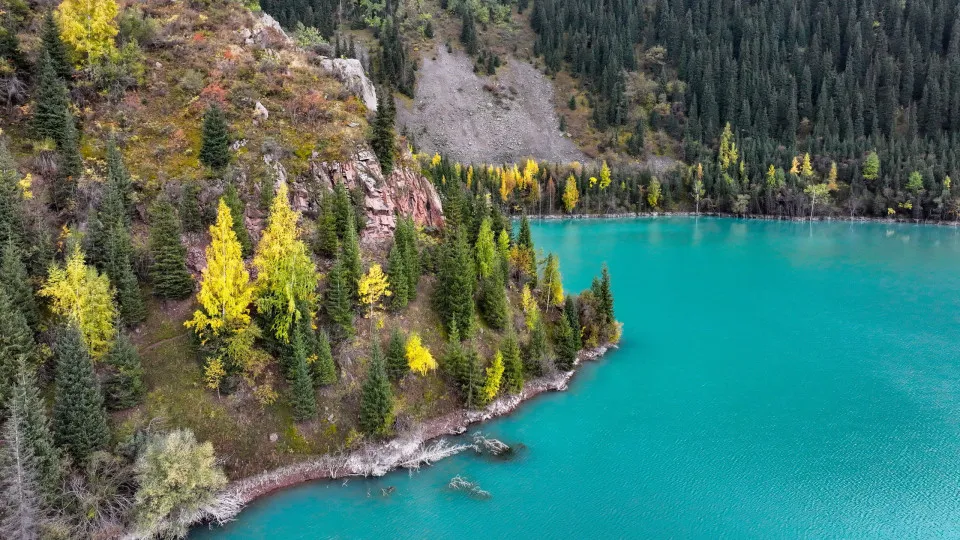Lake Kaindy, sunken deep within Kolsai Lakes National Park in Kazakhstan, was born from a tragic event: the 1911 Kebin earthquake. This disaster triggered landslides, forming a natural dam when limestone debris crashed into a gorge. Over time, rainfall and mountain river water flooded the gorge, creating Lake Kaindy. Iridescent bluish-green waters, reminiscent of a Caribbean lagoon, make Kaindy mesmerizing. The lake's charm lies in its sunken forest—Schrenk’s spruce trees that now resemble ghostly ship masts, their needle-like tips barely visible.
Intrigued? Click on to learn more about this natural wonder!



